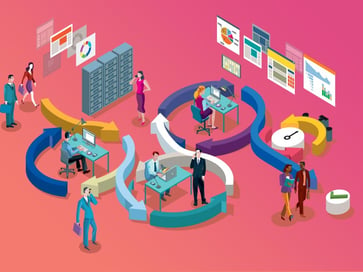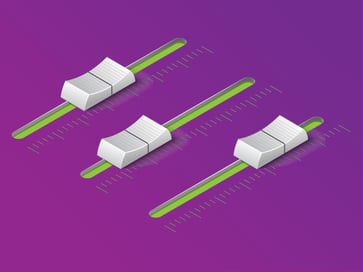PART 2
Getting started in our new integrated world
Please read Part 1 of this 3-part series on the move to Agile here: product planning for durable goods.
The new world
 It would be a miss to not talk about context and the driving forces around us that have so many of us working with physical products seriously thinking about or diving into Agile.
It would be a miss to not talk about context and the driving forces around us that have so many of us working with physical products seriously thinking about or diving into Agile.
More and more hardware manufacturers have software running their products. That’s a new reality for a wider set of industries outside traditional computing (laptops, mobile phones, etc.), which of course was concepted to have software run inside hardware.
We’re talking industrial equipment, medical equipment, aerospace, automotive parts, as well as many consumer goods—from connected home devices like doorbells and thermostats to plush toys and clothing.
Hardware and software teams inside manufacturers in these industries operate in a discord. There are physical and practical constraints around hardware. Mid-stream changes are mostly impossible. Where software teams may be able to make strides in just a few weeks, hardware changes are typically measured in months.
The two areas operate quite differently, too. For instance, the inherently more agile software team can complete sprints every 1-4 weeks, pull in different team members, and be able to effect rapid change in between. In contrast, the hardware team wouldn’t be able to keep the same kind of pace. They can go months between phase gates, often waiting for physical dependencies to resolve before they can make forward progress.
So how do you sync up the hardware and software teams?
 Circling right back to where we started this article: “going agile” requires a shift in thinking.
Circling right back to where we started this article: “going agile” requires a shift in thinking.
Take Tesla, for example. Rather than focusing on the hardware, or the physical car, Tesla approached their process as a tech company. They thought of their physical product as a platform, rather than a vehicle. They wanted the ability to change features and configurations on the fly–something unheard of in the car manufacturing space.
This thinking allowed them to make software changes, download them into the vehicle, and end up with an entirely different car.
Additionally, you not only have to design your product differently; you have to change your infrastructure. In the world of Agile and new thinking, the way you ship features to the product is different. Continuing the Tesla example, there in fact needed to be two separate teams that handled hardware and software.
A new infrastructure and new mindset allowed for radical departures from the accepted norms in the automobile industry. For instance, autonomous driving can now be a feature, added by subscription, rather than having to purchase an entirely different car to get that capability.
In many ways, the change to Agile is a true revolution, not an evolution. The change is radical and multi-pronged.
Revolutions such as Tesla and the ubiquity of software-driven hardware (pun slightly deliberate) are accelerating production of the hardware component as well.
More traditional manufacturers are under pressure to hasten their pace. To innovate. To streamline.
How do you get started on the path to Agile?
 A key note here is that moving the entire organization to Agile may not be feasible.
A key note here is that moving the entire organization to Agile may not be feasible.
So how do you determine which parts of the organization or aspects of current processes would be least compatible with Agile, and how do you prepare to manage that?
- Start by looking at your entire end-to-end product management, product development and go-to-market process.
- At each step, and for each team, ask:
- Where is the greatest potential to reduce time to market?
- What steps in our process would benefit the most from being more customer-centric?
- What aspects of our process and development/manufacturing methods are the least flexible and why?
- Can we do anything about it?
- Start implementing Agile where it will benefit the customer most. Don’t make change for change's sake. If part of your development process is immovably rigid (e.g., tooling: 12 months; supplier lead time: 6 months, etc.), then embrace it and build agility up to and immediately after the immovable.
For an advanced read on the issues many businesses face and a deep dive into the surrounding assumptions, take a look at this most excellent article from Paul O’Connor.
Check back here next week for Part 3 of the Gocious 3-part series on manufacturing’s move to Agile: the impact on your org and how to be successful.
Schedule a personalized free demo of the Gocious platform and see how you can leverage Gocious on your journey to a more flexible and agile organization.


